We loaded into the truck at 7am and set off back the way we came on the Nairobi Road as far as the lookout. There we turned off, stopped at a shop for restrooms and continued on. At the towns you can see car wash places that are literally a group of guys with buckets of soapy water washing vehicles. I don’t know why anyone bothers as it’s so dusty. The contrast in scenery is striking. One minute we are passing through dusty towns and the next minute lush pastures. There is also an interesting mix of technology and subsistence. In Nairobi they were putting in new drains in many roads and the fibre cable was going in at the same time. 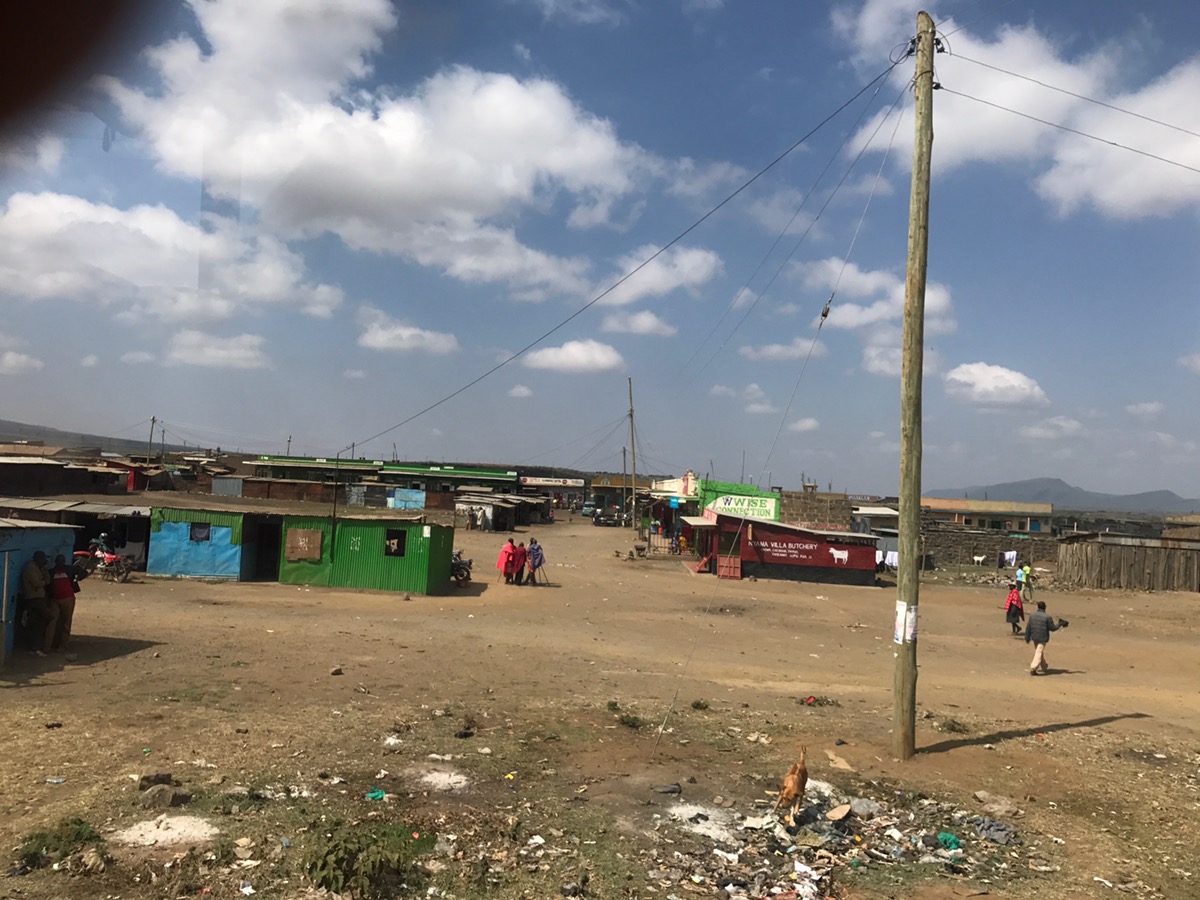


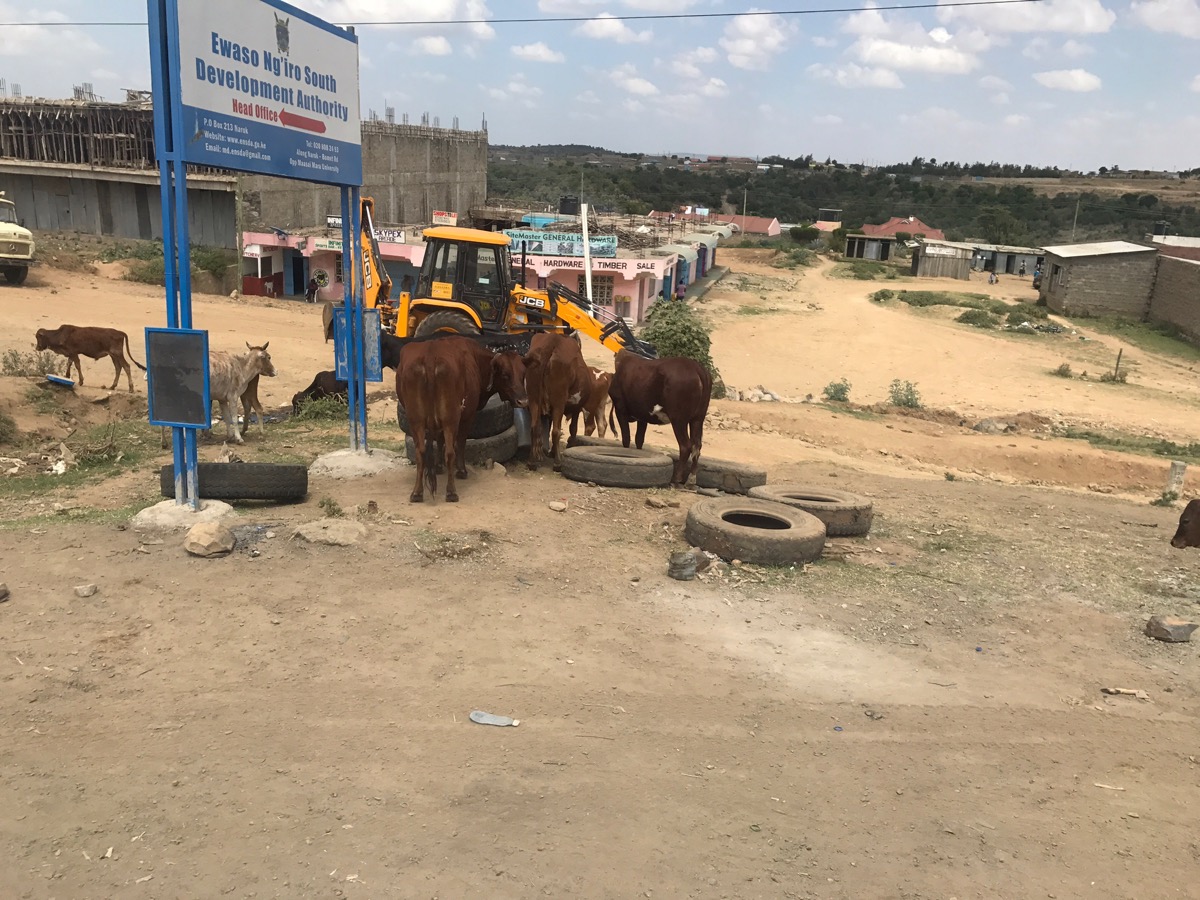 Eventually we came to Narok town where stopped for lunch. Another nice hot buffet meal. Every time you go to a new place, including for food, you get these steaming hot towels which are great.
Eventually we came to Narok town where stopped for lunch. Another nice hot buffet meal. Every time you go to a new place, including for food, you get these steaming hot towels which are great.
Some of the others wanted beers and other provisions so we stopped at the supermarket. I used the loo at one service station while the others were at the shop. Erellah was a bit anxious as I had to pay but it was only 30c (equivalent) and ok. The biggest issue is the lack of water so the cisterns don’t have time to fill.
Soon after that we left the sealed road and we had about 3 and 1/2 hours of rutted road, which was pretty hard for the four sitting over the axle.
About half way to our destination we called into a Masai village that has a relationship with the tour company through the teacher, Helen. She grew up in that village, underwent the genital mutilation at age 9 and then was married off as the fifth wife to a seventy year old. The fathers get 3 cows for each girl so there is no divorce or remarriage otherwise you have to give back the cows. Helen was rescued by a catholic nun, was educated and became a teacher. She remains married but lives in her original village and runs a school mainly for girls. There are about 100 students in this tiny school where many walk up to 10km each day to get here. 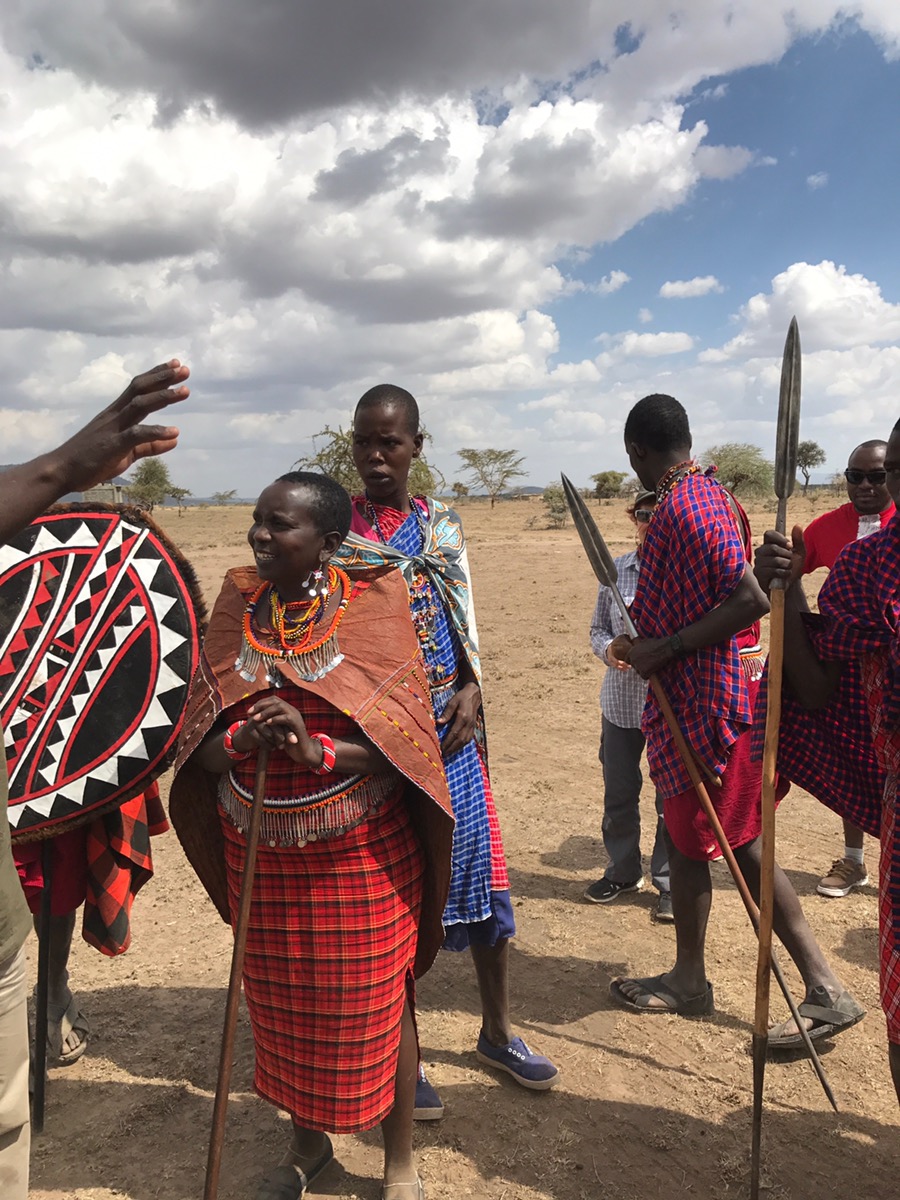
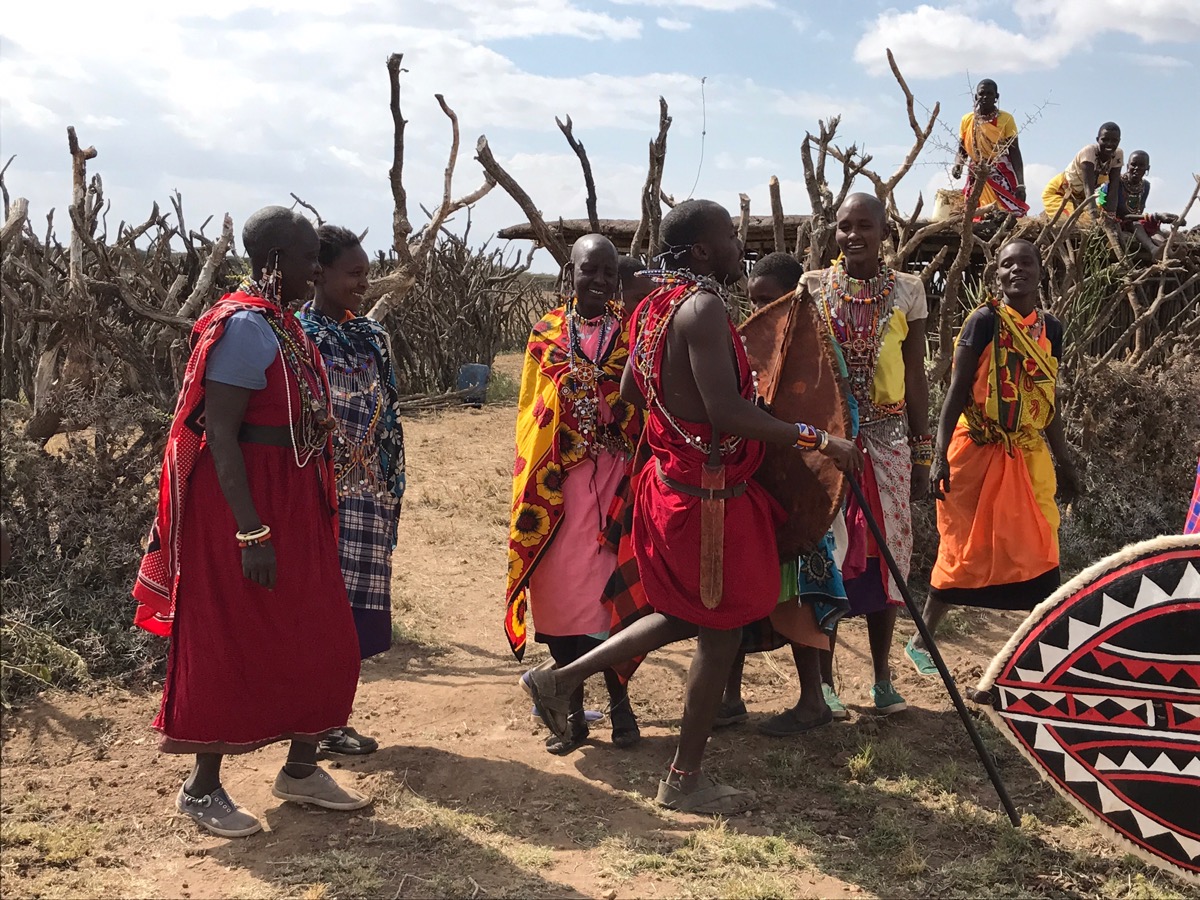
The experience is too much to describe but have included some photos and video.
We saw through the new mud houses being built by the women (Helen was very surprised that women don’t normally build houses in NZ) – the men were almost all out tending the cattle.

 They have quite big herds with up to 2000 animals. There were a few young warriors to welcome us with a traditional dance, which is really cool, as well as all the very excited local kids.
They have quite big herds with up to 2000 animals. There were a few young warriors to welcome us with a traditional dance, which is really cool, as well as all the very excited local kids. 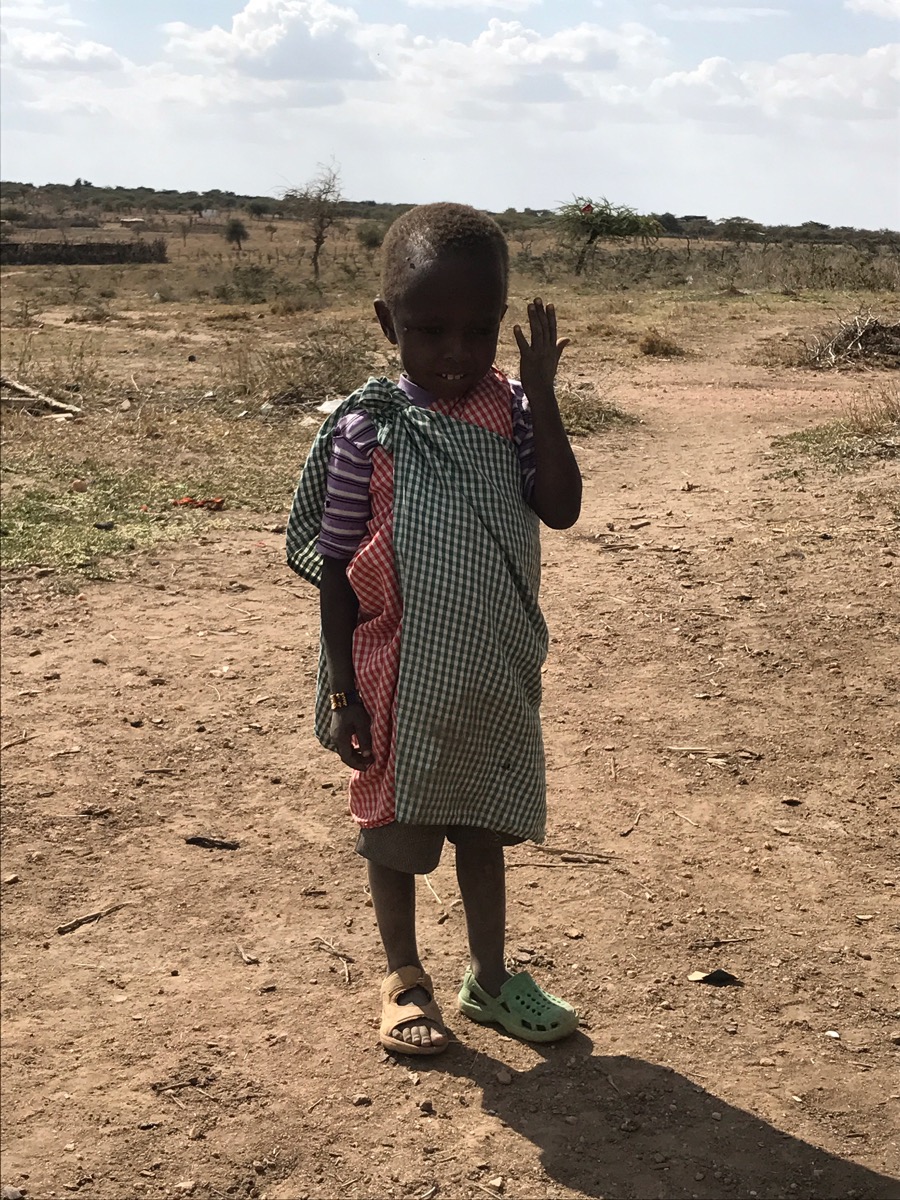 They learn English at school and inside the classroom was not unlike many primary classes (except for the mud walls and dirt floor).
They learn English at school and inside the classroom was not unlike many primary classes (except for the mud walls and dirt floor).
One of the warriors had just returned from his 3 years alone out in the bush. He ‘graduates’ by killing a male lion. Helen had fetched one of the others back to school from the bush as he is bright. He wants to be an architect and had a good chat with Andrew, one of the Kiwis who is an architect. 
Our next stop was at the Masai Mara Game Reserve gate where Mike, Yvonne and I were briefed for our balloon ride the next day. Leaving camp at 5am. Evidently the game reserve differs from a national park in that the Masai people share the reserve with the wild animals. They are allowed to graze their cattle on the reserve at night and the stockmen are out their guarding with sticks and cell phones! They also have flashing lights powered by solar batteries. They move the cattle throughout the night and get them back to corrals by morning so there is shelter during the heat of the day.
We were quite late getting to Mara Leisure Camp and many of our group were pretty grumpy. Our tent is on a raised platform right next to the river. Others asked for a change of room fearing mosquitoes but we love it. The ‘tent’ has 3 beds and a tiled shower room with separate toilet. There is a generator so the power is off at night but it’s wonderfully comfortable.
Dinner was from a fixed menu and very tasty. We both had the chicken. However we didn’t arrive until 7ish so didn’t eat until 8pm and I was totally exhausted. Ready for a 4.30am wake up call.
